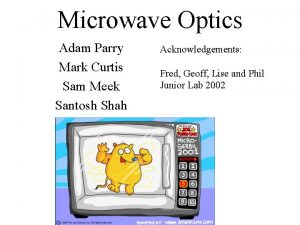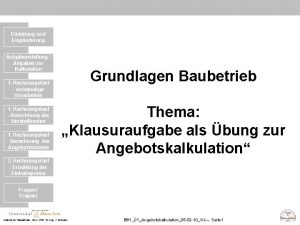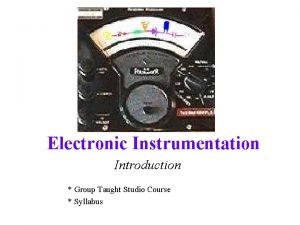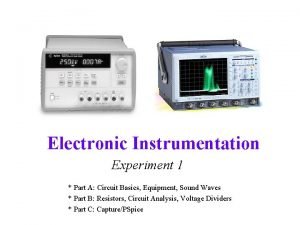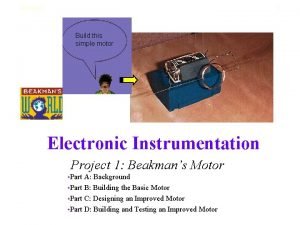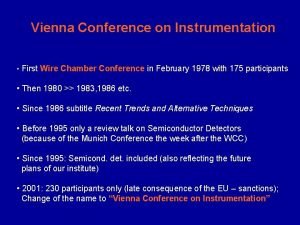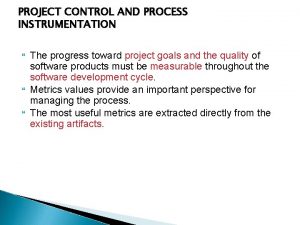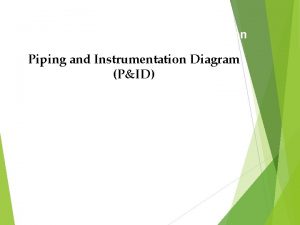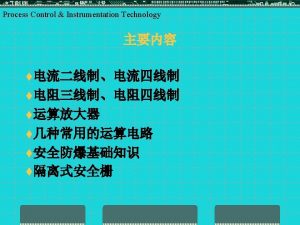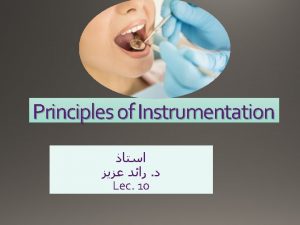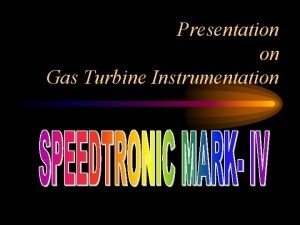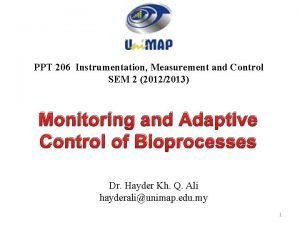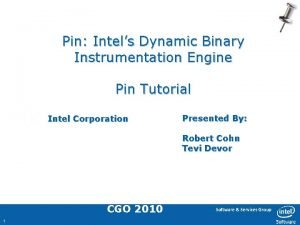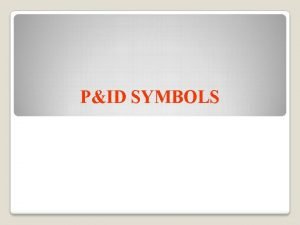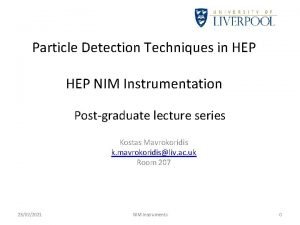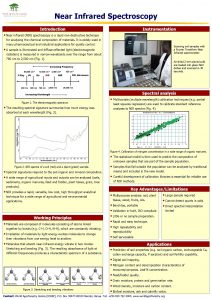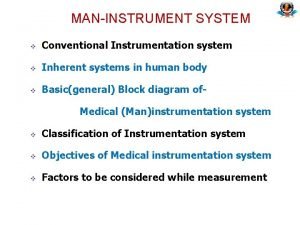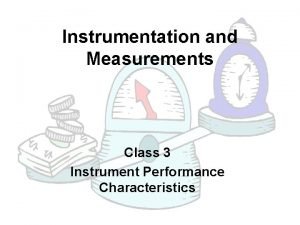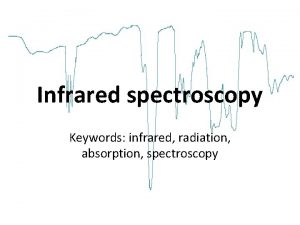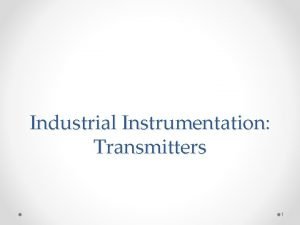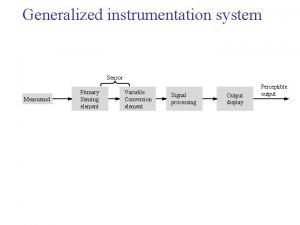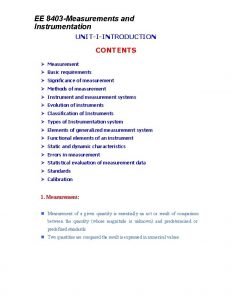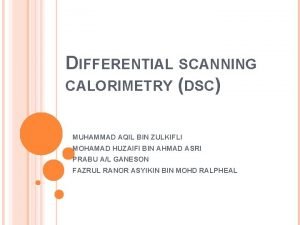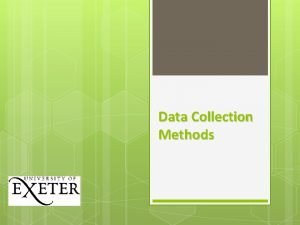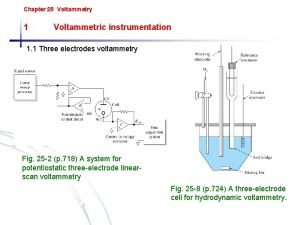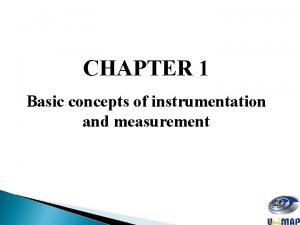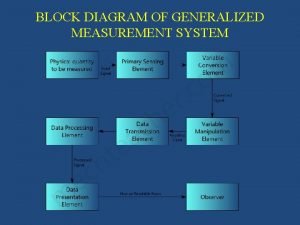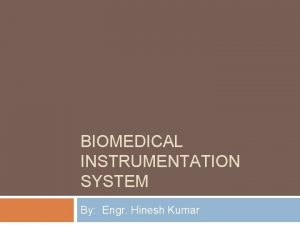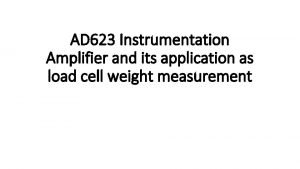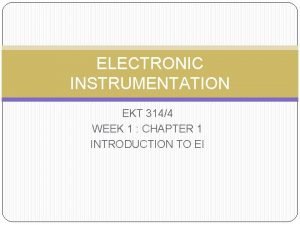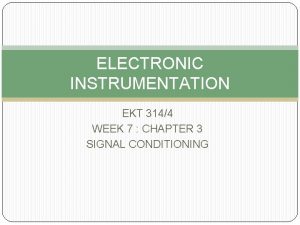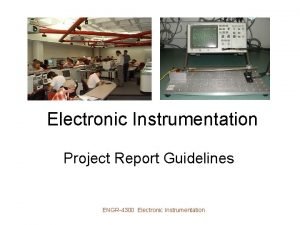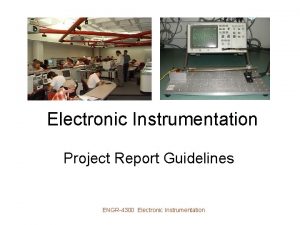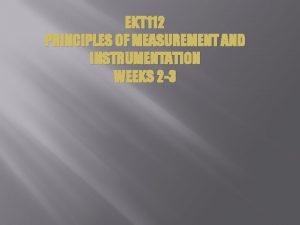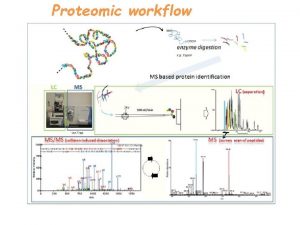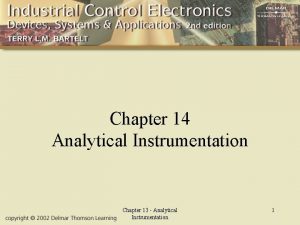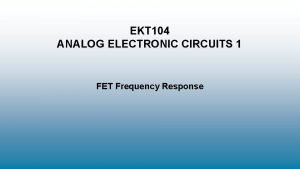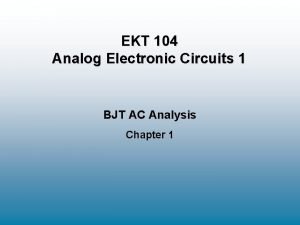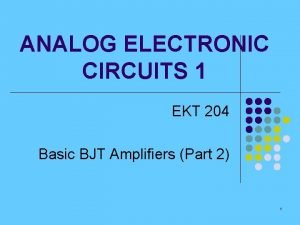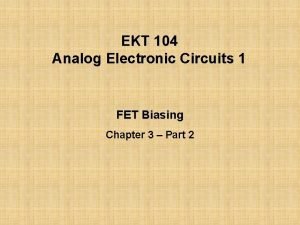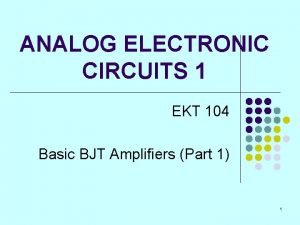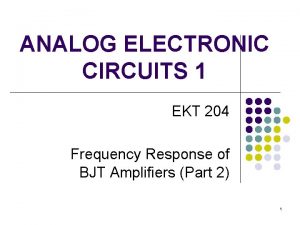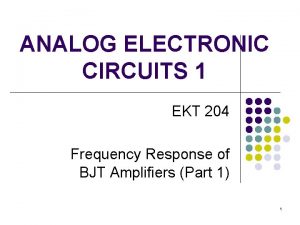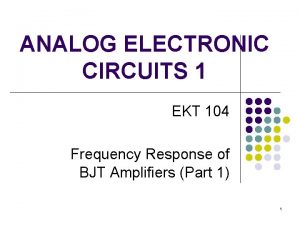ELECTRONIC INSTRUMENTATION EKT 3144 WEEK 9 CHAPTER 4






































- Slides: 38

ELECTRONIC INSTRUMENTATION EKT 314/4 WEEK 9 : CHAPTER 4 DATA ACQUISITION AND CONVERSION

Chapter 4 Problem Statement �Do not know the overall figure of Data Acquisition System �Do not know how ADC work �Do not know how DAC work �To figure out how complex system works �To know what is Sample and Hold

Chapter 4 Objectives �To figure out the DAS �To investigate how ADC work �To investigate how DAC work �To know the function of Multiplexer �To know how Sample & Hold concept work

Chapter 4 Content �Introduction �Single Channel Data Acquisition Systems �Multi Channel Data Acquisition Systems �Data Conversion �Multiplexers �Sample and Hold

Chapter 4 Content �Introduction �DAS Parts �General Block Diagram �Objectives �Single Channel DAS �. �.

Introduction: Parts �Typical DAS consist of: �Sensors �Signal Conditioning �Data Conversion �Data Processing �Multiplexing �Data Handling and Associated Transmission �Storage System �Display System

Introduction: General Block Diagram

Introduction: Objectives �Objective of DAS �To acquire necessary data at correct speed & time. �To inform operator all data efficiently �To monitor complete system operation �To provide effective human communication system and identify problem areas �To enable data collection, analyse and storing �To enable unit performance indices computation.

Chapter 4 Content �Introduction �Single Channel DAS �Parts �Block Diagram �Characteristic �Multi Channel DAS �. �.

Single Channel DAS: Parts �Consist of: �Signal Conditioner �Analog to Digital Converter �Buffer �Display / Record Devices

Single Channel DAS: Block Diagram

Single Channel DAS: Characteristic �Perform repetitive conversion at free running, internally determined rate �Outputs are in digital code words: �Data �Over Range Indication �Polarity Information �Output Validity Status

Chapter 4 Content �. �Single Channel DAS �Multi Channel DAS �Parts �Block Diagram �Characteristics �Comparison with Single Channel �Data Conversion �.

Multi Channel DAS: Parts �Consist of: �Signal Conditioner �Multiplexer �Sample-Hold Circuit �Analog to Digital Converter �Logic Circuit �Buffer �Processor/Controller

Multi Channel DAS: Block Diagram


Multi Channel DAS: Characteristics �Input from Multiple Data Source �Work based on Input Sampling �Multiple Input Multiplexed (TDM) before processed �Can be divided into two different system type based on location of A/D-Multiplexer: �Multiple Input – A/D(s) – Multiplexer – Processor �Multiple Input – Multiplexer – A/D - Processor

Multi Channel DAS: Characteristics


DAS Comparison Single Channel Multiple channel �Simple �Complex and need to �Low parts count be designed wisely to avoid high cost �Faster since data to be read already in digital form �Data always available �Less accurate but acceptable if sampling condition acceptable �Slower since coding need to be change (BCD to Digital) �Data availability time cannot be controlled �Accurate

Chapter 4 Content �. �Multiple Channel DAS �Data Conversion �Digital to Analog Converter (DAC) �Analog to Digital Converter (ADC) �Multiplexer �. �.

Data Conversion �Important aspect of digital data processing �ADC used to encode analog signal to equivalent digital values (signals) �DAC used to decode digital values (signals) to produce equivalent analog signal. �Both conversion have condition: �Upper bound �Lower bound

Chapter 4 Content �. �Multiple Channel DAS �Data Conversion �Digital to Analog Converter (DAC) �Analog to Digital Converter (ADC) �Multiplexer �. �.

DAC: Working Principle �Input is Digital, Output is Analog �Digital Value converted to Equivalent Analog Value �Can Use: �Variable Resistor Network �Opamp (Summing Circuit)

DAC: Variable Resistor Network Bit 2 (MSB) Bit 1 Bit 0 (LSB) 22 21 20 4/7 2/7 1/7 �Binary Equivalent Weight (LSB) �n – number of bit

DAC: Variable Resistor Network Bit 3 (4/7) Bit 2 (2/7) Bit 0 (1/7) Analog Value Vref = +7 V Vref = +14 V 0 0 0 Vref(0) 0 0 1 Vref(1/7) 1 2 0 1 0 Vref(2/7) 2 4 0 1 1 Vref(1/7 + 2/7) 3 6 1 0 0 Vref(4/7) 4 8 1 0 1 Vref(4/7 + 1/7) 5 10 1 1 0 Vref(4/7 + 2/7) 6 12 1 1 1 Vref(4/7 + 2/7 + 1/7) 7 14

DAC: VRN Equiv. Circuit

DAC: VRN – Millman’s theorem �Voltage appearing at any node in a resistive network is equal to the summation of the current entering the node divided by the summation of the conductances connected to the node.

DAC: VRN – Millman’s Theorem �Suppose we have digital value of 001 to be converted into analog voltage �Value 0 = 0 Volt �Value 1 = +7 Volt

DAC: VRN – Millman’s Theorem �Applying Millman’s Theorem:

DAC: Ladder Type Network R-2 R LADDER Binary ladder

DAC: Ladder Type Network �Assignment 1: R-2 R Ladder �Assignment 2: Binary Ladder �*Submit in Monday Lab Session

Chapter 4 Content �. �Multiple Channel DAS �Data Conversion �Digital to Analog Converter (DAC) �Analog to Digital Converter (ADC) �Multiplexer �. �.

ADC: Working Principle �Based on Successive Approximation Method �Compare bit by bit (from highest bit to lowest bit) �Start Signal �Stop Signal

ADC: Block Diagram

ADC Operation � Start=1, SAR=0000 b, Ring. Counter = 0, Vref=5 V, Vin=1 V Oper D 7 Set D 6 Set D 5 Set D 4 Set D 3 Set D 2 Set D 7 D 6 D 5 D 4 D 3 D 2 D 1 D 0 1 0 0 0 0 1 Vout Cmp 2. 5 Vin< 1 Vin> 1 Vin<

ADC Operation: 1 V in, 5 V ref

ELECTRONIC INSTRUMENTATION EKT 314/4 WEEK 9 : CHAPTER 4 END
 Unilab
Unilab Ekt kalkulation
Ekt kalkulation Electronic instrumentation rpi
Electronic instrumentation rpi Rpi electronic instrumentation
Rpi electronic instrumentation Richard feynman
Richard feynman Week by week plans for documenting children's development
Week by week plans for documenting children's development Scrip exchange
Scrip exchange Electronic field production examples
Electronic field production examples Vienna conference on instrumentation
Vienna conference on instrumentation Seven core metrics in spm
Seven core metrics in spm Health concerns
Health concerns Split range control
Split range control Process control instrumentation technology
Process control instrumentation technology Standard pen grasp
Standard pen grasp Gas turbine controls
Gas turbine controls Measurement and instrumentation ppt
Measurement and instrumentation ppt Pin tool tutorial
Pin tool tutorial Piping and instrumentation diagram symbols
Piping and instrumentation diagram symbols Power supply for nim instrumentation
Power supply for nim instrumentation Near infrared spectroscopy instrumentation
Near infrared spectroscopy instrumentation Man instrumentation system
Man instrumentation system Layers of protection
Layers of protection Instrument grasp in dentistry
Instrument grasp in dentistry Zero drift examples
Zero drift examples Ir spectroscopy instrumentation
Ir spectroscopy instrumentation Types of transmitter in instrumentation
Types of transmitter in instrumentation Smart plant instrumentation
Smart plant instrumentation Primary sensing element
Primary sensing element Ir instrumentation
Ir instrumentation Emg instrumentation
Emg instrumentation Ee8403 measurements and instrumentation
Ee8403 measurements and instrumentation Disadvantages of dsc
Disadvantages of dsc What is data?
What is data? Chapter 3 research methodology sample
Chapter 3 research methodology sample Describe voltammetric instrumentation
Describe voltammetric instrumentation Basic concepts of measurement
Basic concepts of measurement Block schematic of measuring system
Block schematic of measuring system Generalized medical instrumentation system
Generalized medical instrumentation system Load cell amplifier vs difference amplfier
Load cell amplifier vs difference amplfier
